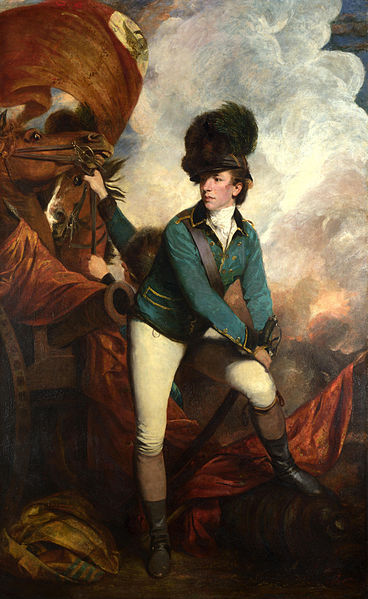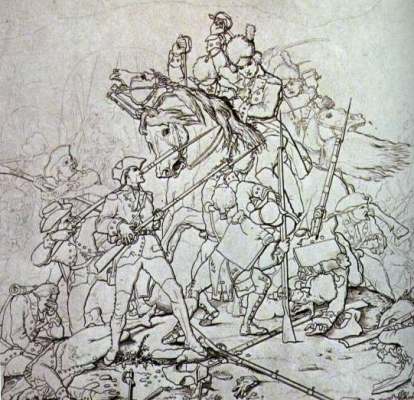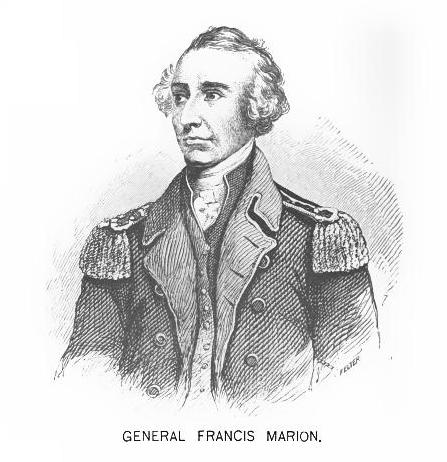They say history is written by the winners, and in the case of General Sir Banastre Tarleton, that may just be the case. History has multiple versions of this general, most of which portray him as a ruthless murderer, and others that assert his loyalty, honor, and dignity.
He may have been the heartless monster that is portrayed in American media today, or he may have just been a soldier doing his job and the victim of the media propaganda war which ruined the reputation of the brilliant Aaron Burr, among others. It seems more likely that it was a combination of the two enhanced by a few bad judgment calls.
Early Life & Education
Banastre Tarleton was born in Liverpool, England on August 21, 1754 to a well-off family. He was the fourth of seven children born to John Tarleton, successful merchant, slave trader, and ship owner. It was perhaps being raised in an environment built on the financial gain from slavery that made him fight so strongly in favor of the institution in parliament later in life.
He was educated at Oxford, but although he studied law, he was well known for his prowess as an athlete, excelling at cricket, boxing, horseback riding, and tennis. By all accounts he was a gentleman, handsome, well bred, and charming.
Cavalry

Lieutenent Colonel Sir Banastre Tarleton, painted by Joshua Reynolds
Public domain image.
He inherited some money at his father’s death in 1773 and promptly gambled most of it away, using the remainder to purchase himself a commission in the 1st Regiment Dragoon Guards. His previous experience as a rider served him well, and he proved himself an excellent horseman and leader. He never had to purchase another promotion; he had only to rely on his skills, which eventually earned him a General’s title.
In 1775 Tarleton volunteered to go to America to quell the stirrings of the revolution, begun with the Battles of Lexington and Concord. Banastre Tarleton fought well and bravely for the British Army, with many successes, including the capture of Patriot General Charles Lee. This, along with his excellent record earned him the title of Lieutenant Colonel at the age of 23.
The Green Dragoons
Banastre Tarleton’s British Legion became known as the Green Dragoons (soldiers who ride horseback into battle and fight equally well on horseback or on foot). They were a gifted mixture of light infantry (foot soldiers) and cavalry (horseback soldiers) whose green jackets marked them out and struck fear into the hearts of their adversaries after only a few battles.
They were quick, strong, and their leader was an excellent soldier whose success had commanded their respect, and earned the statement “I wish you would get three legions, and divide yourself into three parts: We can do no good without you,” from Lord Cornwallis himself.
The Battle of Waxhaws
However, the Patriots did not see his successes with the same admiration. In particular, his actions at the Battle of Waxhaws earned him the unique titles “the most hated officer in America” and “bloody Tarleton” which have carried down through the years.

“The Waxhaw Massacre” sketch, author unknown
Public domain image.
The facts agree that Lieutenant Colonel Banastre Tarleton and 129 mostly loyalist soldiers overtook about 350 continental soldiers led by Abraham Buford on May 29, 1780. Buford fought bravely and refused to surrender; only after he suffered severe casualties, did he surrender.
What followed is debated. The popular surviving version of the story tells that Tarleton continued to butcher soldiers without mercy although they screamed their surrender; if that were true, the American titles, “Buford Massacre” or “Waxhaw Massacre” would be well earned.
An American field surgeon at the scene, however, claimed that as Abraham Buford began raising the flag in surrender, Banastre Tarleton’s horse was shot from beneath him. Enraged that they would ask for mercy and then shoot at their leader, the loyalists attacked fiercely, stabbing even those who weren’t resisting and injured men on the ground. Tarleton later admitted it was “vindictive…not easily restrained.”
The final death toll for the Americans was 110, 203 captured, and more than 150 wounded so badly they had to be left there. The British lost 5, and only 12 were wounded. From then on, offering no quarter was referred to as “Tarleton’s Quarter” and his reputation grew. He was only 26 at the time.
The Swamp Fox

Francis Marion, “The Swamp Fox”public domain image
Another incident detrimental to his reputation was his encounter with Francis Marion, the Swamp Fox. Marion was an expert at guerilla warfare, hiding, and sneaking past British troops, making him a hero to the South Carolina resident patriots.
No one had successfully caught him, and when Tarleton was given the task, he instantly made himself unpopular by acting unnecessarily cruelly to the residents and burning homes and land in an effort to draw out the fox.
His later actions when he captured Monticello (home of Thomas Jefferson) suggest that his previous actions were purely military in motive as Jefferson himself is quoted as saying that Tarleton caused no harm and specifically ordered that his men treat the objects in the home gently.
End of the War and Politics
He was successful in a few more raids in Virginia, but he eventually surrendered Gloucester Point, Virginia when Yorktown was surrendered, and he returned to England.
Banastre Tarleton held a seat in parliament. His most notable stances were that he supported Charles Fox (although they differed in their opinions of the Revolutionary War) and strongly advocated slavery, openly mocking the abolitionists. Likely, he believed that such a deeply rooted institution such as slavery, that had been strong, thriving, and successful for so long, could never be uprooted.
He earned himself even more military titles up to General, a fooonetcy, and a governorship. After a 15-year relationship with a famous actress, he married the illegitimate daughter of a duke in 1798. He had no children and died in January 15, 1833.


